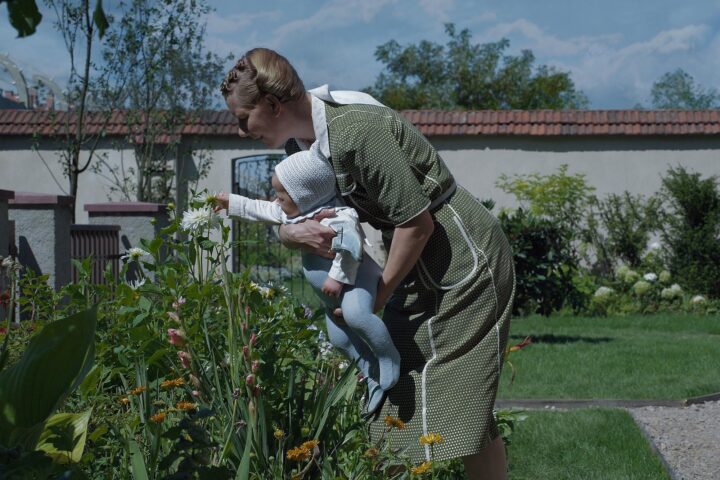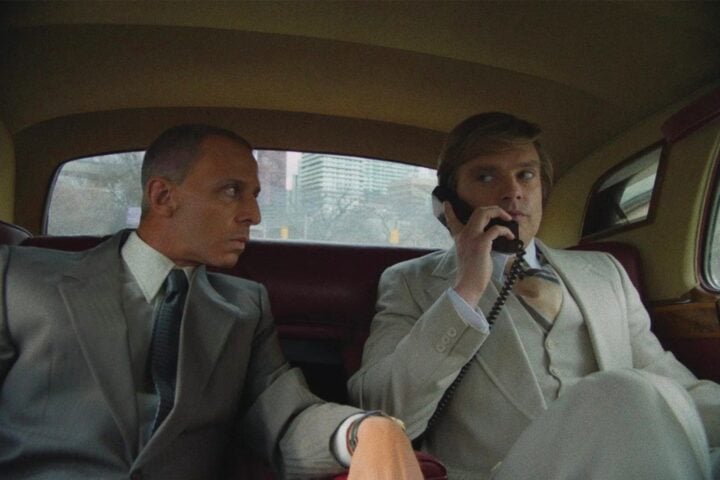Gone are the days when cinephiles could just expect “Cannes on the Hudson” from the New York Film Festival. In his fifth year since assuming leadership of the selection committee from Kent Jones, artistic director Dennis Lim continues to bring both vitality and variety to the festival. If there’s a near-constant among the changes, it’s Hong Sang-soo having two movies in the main slate. (This year it’s By the Stream and A Traveler’s Needs.)
Elder statesmen like David Cronenberg, Mike Leigh, and Paul Schrader return with their latest films. But this 62nd edition of the festival, which runs from September 27 to October 24, doesn’t belong to the veterans. If any streak runs through the main slate, it’s the prominence of second features, including RaMell Ross’s Nickel Boys (this year’s opening-night selection), Dea Kulumbegashvili’s April, and Payal Kapadia’s All We Imagine as Light. Giving these sophomore outings prime festival real estate is quite a vote of confidence in the next generation of auteurs leveling up on the global cinema circuit. (Not to be outdone, longtime Slant contributor Carson Lund is the lone debut feature filmmaker working in a fictional storytelling mode with Eephus.)
For those whose tastes run to the Croisette, the major prize recipients from this year’s Cannes, including Sean Baker’s Palme d’Or-winner Anora, are of course well-represented. And so are this year’s winners out of Berlinale (Mati Diop’s Dahomey) and Venice (Pedro Almodóvar’s subdued but still subversive The Room Next Door, the centerpiece selection). Meanwhile, the closing-night selection, Steve McQueen’s Blitz, will have its premiere screening at the BFI London Film Festival a day before screening for the public in New York.
Documentary also takes up an increased prevalence in the main slate following the festival sunsetting their “Spotlight on Documentary” sidebar. The major world premieres in the lineup are both nonfiction works: Julia Loktev’s five-hour My Undesirable Friends: Part I — Last Air in Moscow and Robinson Devor’s Suburban Fury. Rivaling Hong with his prolific output, Wang Bing also returns with the final two parts of his Youth trilogy: Hard Times and Homecoming.
But the documentary likeliest to make the most noise is the verité chronicle of Palestinian life, No Other Land. The film sparked a political firestorm in Berlin following the festival award acceptance speech by Yuval Abraham, one of the four credited directors of the film. With a group called the New York Counter Film Festival advocating a boycott of the festival in the name of solidarity with Palestine, the film may shape reality in addition to reflecting it.
And all this is to say nothing of the festival’s sidebars and their own embarrassment of riches. Spotlight, which features Luca Guadagnino’s Queer as its centerpiece, boasts no shortage of buzzy titles. Currents helps to surface innovative features and shorts at the cutting edge of film form. Among the many titles ripe for discovery, this year’s lineup offers new films by Jem Cohen and Matías Piñeiro, as well as Canada’s Oscar submission, Michael Rankin’s Universal Language, a one-of-a-kind riff on Iranian cinema. And while the restorations in this year’s Revivals section cover canonical legends of cinema ranging from Robert Bresson to Ousmane Sembène, one title in the mix turned quite a few heads: Clive Barker’s splatter film classic Hellraiser, an extreme offering that demonstrates just how wide a net the festival casts.
While the Toronto International Film Festival may still lay claim to the “festival of festivals” branding, this year’s New York Film Festival offers America’s version of a cinematic cornucopia. With 101 films from 48 countries spread across 18 glorious days, it’s hard to think of another festival that balances such expert curation with a wide variety of choices. Marshall Shaffer
For full reviews of the films in this year’s lineup, click on the links in the capsules below. And for a complete schedule of films, screening times, and ticket information, click here.
All We Imagine as Light (Payal Kapadia)
All We Imagine as Light’s characters are circumscribed by social disadvantages and personal hardships, yet they maintain a stubborn freedom. The film’s urban landscape is gaseous, gyrating, dizzyingly complex. Yet when night falls, it’s quiet and poetic, drawing you into an embrace. Payal Kapadia’s mode of understanding and constructing her Mumbai on screen makes fluid shifts from the cerebral to the viscerally sensual to the didactically political. These are tectonic transitions occurring on the level of the form, and Kapadia makes them look effortless. With this follow-up to A Night of Knowing Nothing, her 2021 docufiction about the student protest movements that swept India after the death of anti-caste student activist Rohith Vemula, Kapadia has created an exceptional document of a city and its people. Ryan Coleman
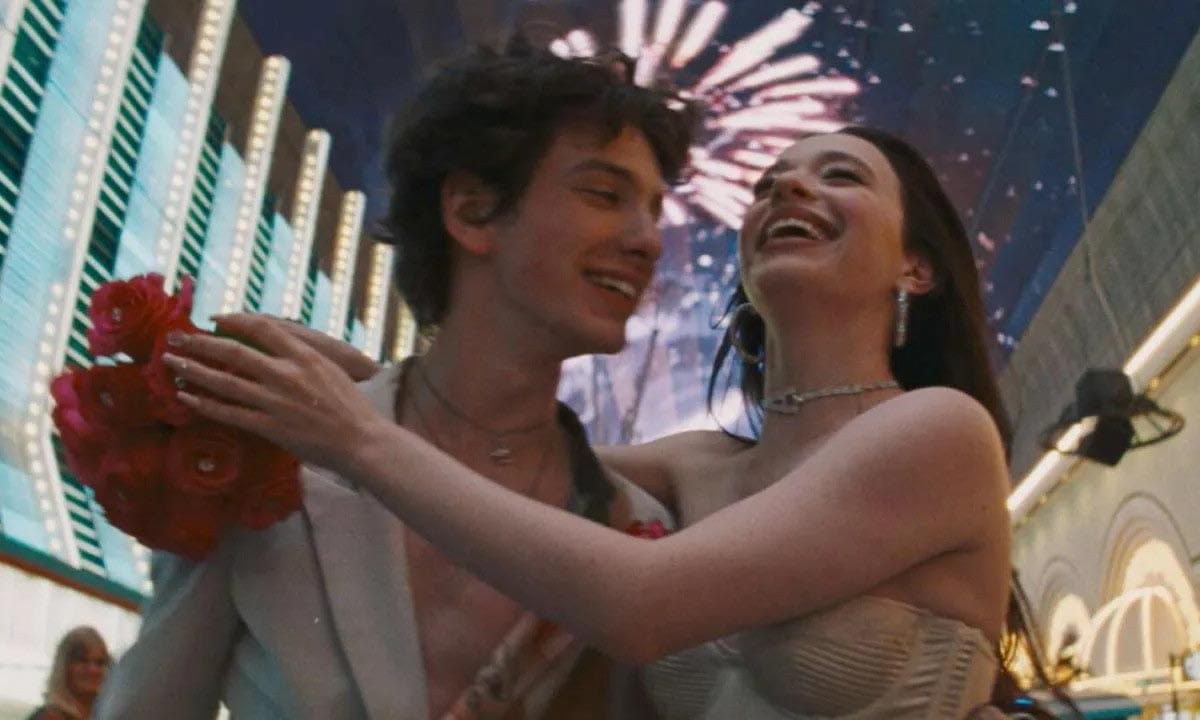
Anora (Sean Baker)
The eponymous character of Anora, a feisty 23-year-old Brooklyn sex worker, lives the sort of hardscrabble and precarious life that writer-director Sean Baker has vigorously tracked across his work. But while Baker’s protagonists are typically mired in the same place, Ani (Mikey Madison), as Anora emphatically prefers to be called, manages to escape the familiar, and crash through the class divide with all the subtlety of a wrecking ball. Her quixotic quest to remain among Russian oligarchs is a riotously funny neorealist farce that will be familiar to fans of Tangerine and Red Rocket, though at times it feels like the rougher edges of Baker’s vision have been smoothed out in the interest of driving home an easily digestible allegory. Mark Hanson
April (Dea Kulumbegashvili)
April’s point of view mirrors that of Ia Sukhitashvili’s Nina. Her primary line of work involves operating out of a hospital maternity ward in the rural eastern reaches of Georgia, but she also takes care of pregnancies in a different way by performing illicit abortions in homes. Nina senses no cognitive dissonance in her dual functions, nor does she feel a need to compartmentalize the two roles. A steely but soulful Sukhitashvili keeps Nina’s motives aptly inscrutable as the woman is torn between per professional duties and her personal feelings. But like the ever-present breathing noises that permeate the soundscape of April, so, too, do the traces of her hardscrabble humanity peek through the film’s austere images. April is always at its most compelling when Dea Kulumbegashvili grounds a scene in the immediacy of Nina’s presence, even if she’s only peeking into a shot from the edge of the frame. Shaffer
Blitz (Steve McQueen)
Even more so than in his enjoyable yet unbalanced Widows, Steve McQueen’s keen painterly eye and impressive showmanship consistently run counter to any ethical agenda across Blitz. Whether depicting impromptu piano sing-alongs in young George’s (Elliott Hefferman) home or cheeky female camaraderie in the munitions factory where the boy’s mother, Rita (Saoirse Ronan), works, the immaculate framing and lighting can’t help but enhance the film’s burned-in nostalgic glaze and exacerbate the two-dimensionality of the characters, which dulls the emotional impact of the traumas to which they’re subjected. Blitz is an earnest, broad-strokes portrait of a bustling city that occasionally succeeds in communicating the unprecedented sensory shock of modern warfare, but its uncritical craftsmanship and quarantining of past atrocities from present-day concerns also render the proceedings mostly lifeless. David Robb
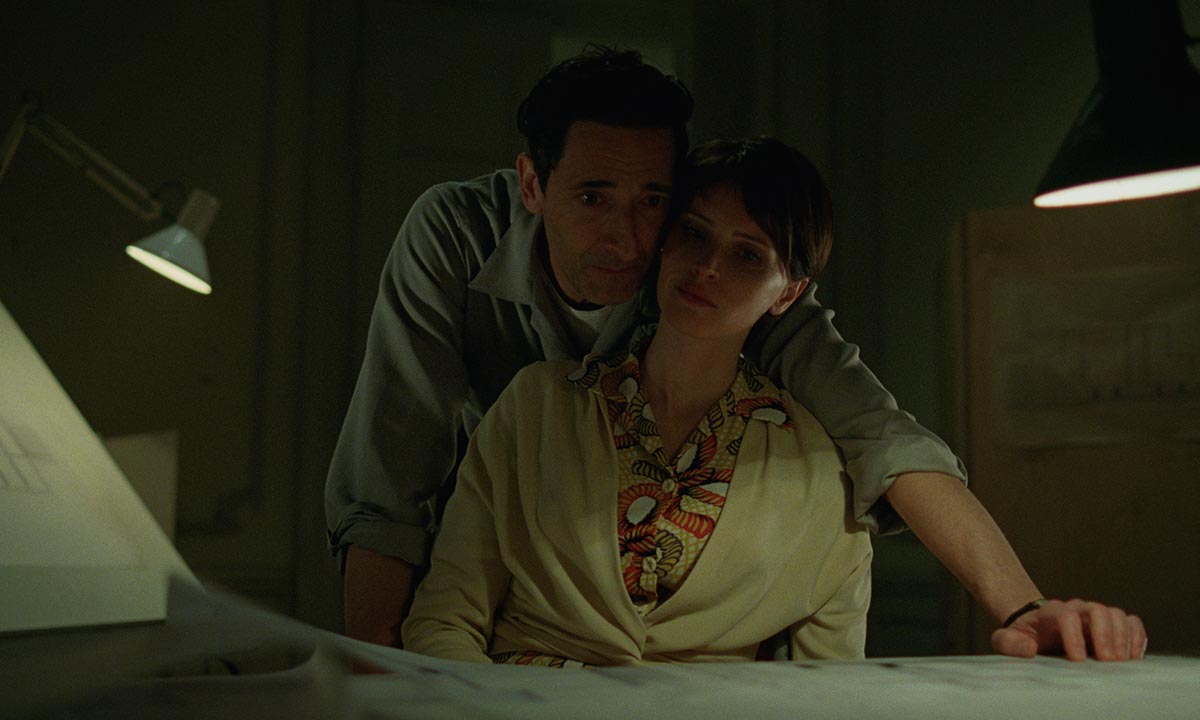
The Brutalist (Brady Corbet)
Even though it also concerns an architect fighting entrenched elites to achieve his singular vision, Brady Corbet’s The Brutalist doesn’t bow before the altar of The Fountainhead. Yet he takes a gauntlet thrown down early in King Vidor’s 1949 film adaptation of Ayn Rand’s novel—no place originality exists in architecture, and the past cannot be improved upon—more seriously than either artist. Corbet’s epic, like Adrien Brody’s László Toth, remains unconcerned with choosing between honoring the past and catering to the present. They instead seek to transcend time altogether, thus equipping their artistry to endure well into the future. László is an imperfect but never inconsistent protagonist, which is part of why his jagged edges mesh so well with the airtight construction of the film. Corbet builds on celluloid what László does with concrete: an unvarnished monument to the authentic American character. Shaffer
By the Stream (Hong Sang-soo)
Hong Sang-soo’s By the Stream opens on a pastoral autumn landscape of Seoul, with a stream running toward a bridge. Wide landscape shots are unusual for Hong, and this image introduces this stream as the first of several refrains that will run through the film as, well, currents. Amid a vast narrative, especially for Hong, one that’s rich in scandals and disappointments and broken promises, there’s the relief for the characters of the stream, the foliage, and the moon. So many of Hong’s films, but especially By the Stream, derive their volatility from his interest in the pitfalls of individuals making and consuming art, namely selfishness and isolation, which exist irreconcilably with the potential of art as a vehicle of personal expression and social unity. Art is a mode of potential connection built in large part on narcissism, then, and Hong is without peer these days in wrestling that irony onto the screen. Chuck Bowen
Caught by the Tides (Jia Zhang-ke)
Jia Zhang-ke’s Caught by the Tides attests to the fact that making art under the most adverse conditions can prove to be serendipitous. If shooting a film from scratch wasn’t feasible under China’s restrictive Covid lockdowns, Jia viewed the situation as a formal constraint, in the same way a poet might approach the rules of a sestina. Turning to his existing body of work, he recycled earlier material, editing together unused footage with what could be shot under the circumstances. The result is a bricolage of documentary, minimalist drama, and experimental remake. As Jia’s filmography is inseparable from the career of his spouse and longtime collaborator, actress Zhao Tao, the film also operates as a dual retrospective. William Repass
Dahomey (Mati Diop)
Throughout its 69 minutes, Mati Diop’s captivating, fabulistic documentary Dahomey focuses on the return of 26 artifacts that France had stolen from the historical Kingdom of Dahomey (present-day Benin) when, after centuries of occupation and colonial meddling, it was finally conquered and ransacked in the 1890s. The film confronts the reality of how modernity has been shaped by the West’s theft of cultural heritage. Its narrator, such as it is, is the spirit embodied by the statue of a Dahomey king, represented by a reverberating, multitracked voice that periodically dominates the soundtrack. The effect is haunting and powerful, a vivid reminder that in their original context, these figures had a presence and a personality suppressed but not erased by the distanced, anthropological gaze of the museum. Pat Brown
The Damned (Robert Minervini)
Recalling Roberto Minervini’s past docufiction work (Low Tide, Stop the Pounding Heart, The Other Side), The Damned is a show of impressionistic portraiture. Here, the regimented tasks of nomadic living are given the treatment that Gustave Caillebotte gave The Floor Scrapers. Shadows play on faces at night, and not a single scene is shot in the flatness of noon light. But while Minervini’s camera—its vintage lenses dropping off focus everywhere outside the immediate center of the frame—floridly beautifies the soldiers’ quotidian tasks, these men don’t see their lives as beautiful. “Does God approve of war?” asks a soldier at one point. Such fragments of dialogue heard throughout The Damned give the impression that every soldier in the film has been cut from the brooding cloth of Dostoevsky’s Raskolnikov. Zach Lewis
Eephus (Carson Lund)
Carson Lund’s Eephus subtly tasks us with thinking of its characters as extensions of the titular pitch: weapons of deception and surprise, not least of which for how they increasingly reveal their passion for the sport and each other as the final game between their teams at an intramural field due to be paved over unfurls. Though set in the 1990s, Eephus feels keyed to the current anxiety over the erosion of public gathering spaces and America’s so-called loneliness epidemic. While the characters care deeply for baseball, their desperate efforts to prolong the game, in lieu of making far simpler plans for future meet-ups, make it obvious that their reasons for doing so go well beyond sport. It’s an irony that hangs over the final stretch of the film, and it’s one that Lund treats with elegiac empathy for the power of a shared interest. Jake Cole
Emilia Pérez (Jacques Audiard)
Writer-director Jacques Audiard’s Emilia Pérez, which is defined by random, whiplash-inducing tonal pivots, seldom commits to a point of view or idea, be it about systematic and gendered violence in Mexico, the struggles of being trans, the corruption of the government, or the struggles of being a woman in the nonprofit sector. The best noirs key their aesthetics to the psychosexual impulses of their characters, but just as its style is enervating, Emilia Pérez settles for mundane portraiture. For one, Audiard’s film heavily implies that Emilia’s (Karla Sofía Gascón) womanhood has granted her a sense of empathy that she was previously lacking when she was existing as a barbaric and violent man, but it never really digs into that. Sofía Gascón hints at a more complex character, one who’s forever riding the waves of violence and tenderness, but Audiard mostly just sees her as a reformed sinner. Kyle Turner
Grand Tour (Miguel Gomes)
Miguel Gomes’s Grand Tour takes its title from an established travel itinerary known as the Asian Grand Tour, a popular option with Westerners seeking a broad but surface-level introduction to the continent in the early 20th century. Proceeding from Mandalay to Rangoon (present-day Yangon) to Singapore, and then on through Bangkok, Saigon, Manila, and Osaka, before ending in Shanghai, the tour was ideally designed to satisfy the era’s popular taste for Eastern exoticism in an efficient, tourist-friendly package. It’s easy to see the appeal for Gomes, a director for whom boundaries of space and time have always been ripe for cinematic manipulation. Grand Tour retraces the steps of the journey with the imagination and playfulness of his best work, indulging its globetrotting impulses while casting a satirical eye on its uncomfortable basis in colonial conquest. Brad Hanford
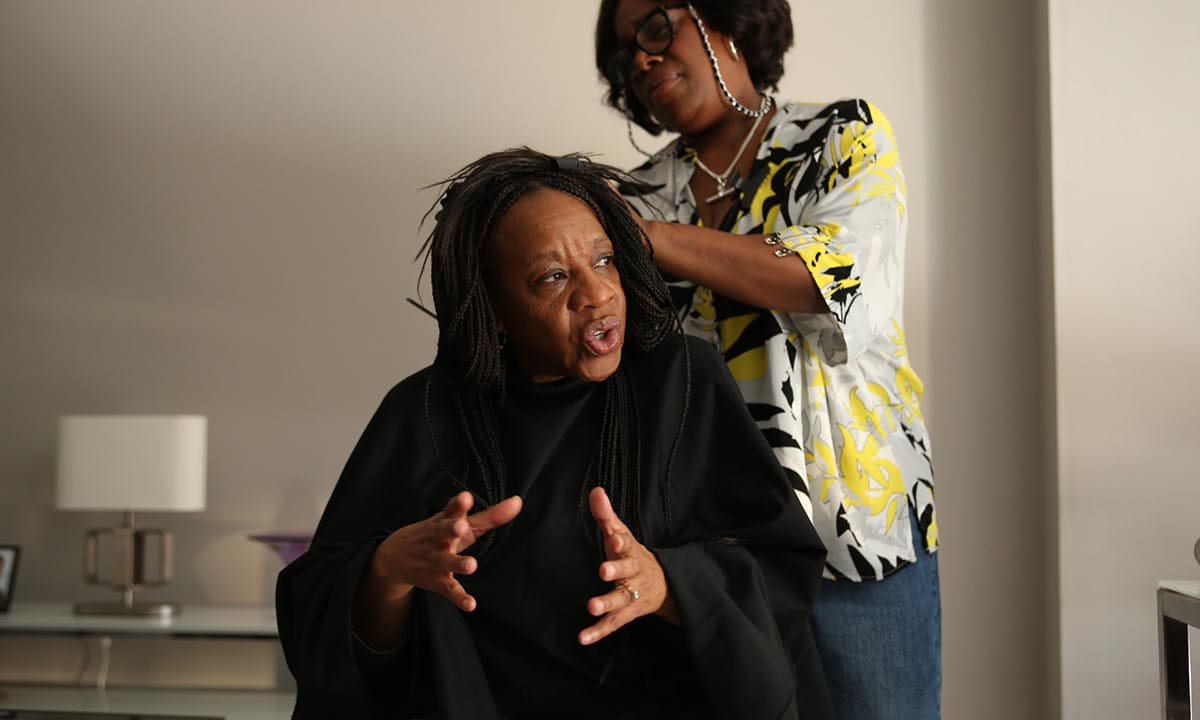
Hard Truths (Mike Leigh)
Even at its funniest, Mike Leigh’s Hard Truths finds Jean-Baptiste channeling an anger that feels excruciatingly real. There’s some larger-than-life acting here—in a particularly devastating scene, her Pansy chokes out a single “thank you” with such difficulty that she may as well be passing a kidney stone—though the actress finds equal discomfort in the charged silences between, which have mutated into something outright terrifying by film’s end. Throughout, Leigh steadily develops characters in one-off, meandering vignettes before putting them in rooms together to examine how their preoccupations mesh. One of the titular hard truths may well be that even the bitterest among us are deserving of sympathy, though the murkier corollary to this is that, put bluntly, sympathy is hard-won. Leigh and his performers are content to let this contradiction sit, because to do otherwise would be dishonest. Cole Kronman
Happyend (Neo Sora)
Neo Sora’s Happyend uses a Tokyo high school as a synecdoche for Japan when a principal (Sano Shirô) desperate to preserve his power over the subjects in his charge installs a cutting-edge surveillance system across campus. Named Panopty, the cheeky repacking of Foucauldian concepts gamifies the control of the student population. Of course, no demographic group is less likely to submit to mechanized discipline and punishment than teenagers. While the film is alternately impressive as teen drama and political commentary, Sora struggles to balance the immediacy of adolescent angst with the long-range outlook of using the students’ experience as a canary in the coal mine for society at large. It’s a confident narrative feature debut, with plenty of insight into the direction of a nation and generation, but it wants for more connective tissue between the small details and Sora’s bigger-picture views. Shaffer
Harvest (Athina Rachel Tsangari)
An eventful week in the waning days of a medieval English village provides the narrative backbone for Harvest, Athina Rachel Tsangari’s adaptation of Jim Crace’s novel. Tsangari finds her own way into the story’s setting—a lord-of-the-manor-ruled agricultural collective—by accentuating the grit and the grime. This is evident in everything from Sean Price Williams’s grainy 16mm cinematography to the casting of Caleb Landry Jones, who often seems like he’s just emerged dazed and confused from primordial sludge. But a good deal of Harvest tends to the sluggish, recreating the basic incidents of Crace’s story without adeptly communicating the main character’s peculiarities of perspective. What we’re left with is a handsomely mounted production in which much of the filth feels stage-managed. The muck that the film requires, both spiritual and psychological, shouldn’t have its own dressing room. Keith Uhlich
It’s Not Me (Leos Carax)
It’s Not Me began as a question posed by the Centre Pompidou in Paris: “Where are you at, Leos Carax?” The film begins with a modest “I don’t know” as a riposte to the proposed riddle, uttered through Carax’s hoarse and disaffected voice. This not knowing becomes the empty space to be filled with the philosophical speculations that are so central to the essay film as a genre. Here we have, then, a self-portrait that performs doubt as the purveyor of an unstable, and always preliminary, truth. For in the world of the essay, which Carax mimics with text-book precision, the filmmaker shares his vulnerability, not a ready-made argument. The one who’s supposed to know is exposed, perhaps sacrificed, as the one who’s simply supposed to wonder. And the forging of the oeuvre, ever so tentative, becomes the oeuvre itself. Diego Semerene
Maria (Pablo Larraín)
Between Jackie, Spencer, and, now, Maria, Pablo Larraín has thrice committed the cardinal sin of taking a female icon of the 20th century and, in an attempt to hold a mirror up to her multitudes, flattened her into the equivalent of a kitschy postage stamp. Though his sense of style seems like an attempt to absolve him of indulging in the generic tendencies of the biopic, his dependence on repeating the same ideas with the same self-seriousness does a disservice to his supposed goal of bestowing a sense of agency on complex, hyper-surveilled icons of femininity. Too often, as in Maria, he conflates a woman moping around empty rooms to brash music with a more tactile notion of interiority or complexity. Turner
Misericordia (Alain Guiraudie)
Fans of Alain Guiraudie’s work may take the opening sequence of Misericordia as a sign that they’re in familiar terrain. A view from behind the windshield of a car winding its way through back roads to a small hillside village, it announces the premiere chronicler of lust and violence in the French countryside’s return to the milieu in which he made his name. Indeed, Misericordia finds Guiraudie revisiting old standbys—a linking of queer desire and mortality, a distanced but lighthearted absurdism, and a refusal to get moralistic about transgressive behavior—under a relatively conventional set of aesthetic strategies. Fortunately, the ideas roiling under the former wildman’s newly placid surfaces are as potent as ever. Hanford
My Undesirable Friends: Part I — Last Air in Moscow (Julia Loktev)
Running five-and-a-half hours and split into five chapters, Julia Loktev’s My Undesirable Friends: Part I—Last Air in Moscow chronicles the hardscrabble efforts and eventual exile of a group of young Russian journalists who work for the independent news channel TV Rain. The struggle is real, and there’s a degree, interestingly, to which the film is itself an effort to get through. It’s as if Loktev is trying to find the movie she’s making in real time. In a strange and very sad way, the Ukraine invasion gives Loktev’s movie its sense of purpose. From the third chapter on, My Undesirable Friends proceeds with grim inevitability, though the dourness is frequently commingled with energizing expressions of joy and solidarity. What’s left to do, and indeed what can be done, when effecting change from within is no longer possible? Loktev plans to explore that idea in a sequel subtitled Exile, which is still in production. Uhlich
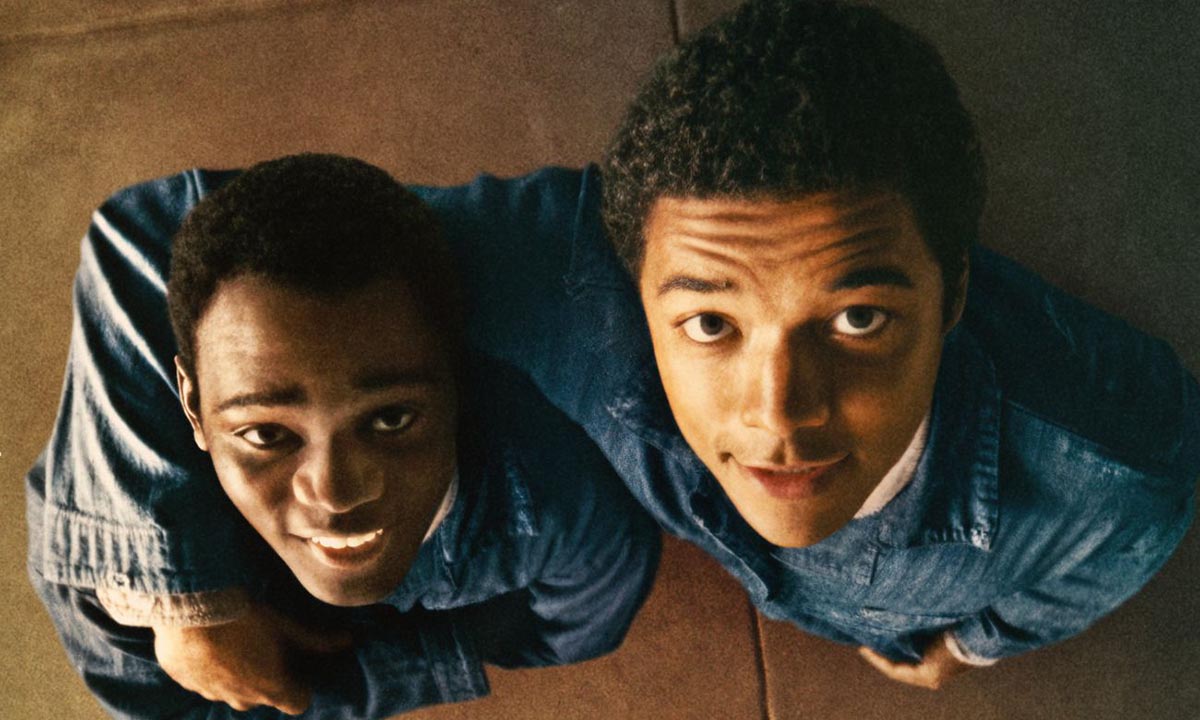
Nickel Boys (RaMell Ross)
There’s no “the” in the title of RaMell Ross’s adaptation of Colson Whitehead’s Pulitzer Prize-winning 2019 novel The Nickel Boys. Though it seems like a minor change, the dropped article turns out to be significant when you see what Ross has brought to the screen. Though Whitehead’s harrowing chronicle of abuses at a reform school in the 1960s was inspired by a real place—the Nickel Academy stands in for the infamous Arthur G. Dozier School for Boys in Florida—Ross sees in Whitehead’s story a more universal tale, one with personal and historical implications beyond the characters and settings of this specific narrative. One could call Nickel Boys a coming-of-age tale. But to try to pigeonhole it to a genre would do a disservice to Ross’s remarkable film, which finds an expressive power in formally adventurous technique that fashions mesmerizing, cumulatively affecting poetry out of Whitehead’s prose. Kenji Fujishima
No Other Land (Yuval Abraham, Basel Adra, Hamdan Ballal, and Rachel Szor)
Basel Adra, Yuval Abraham, Hamdan Ballal, and Rachel Szor’s documentary No Other Land embeds the viewer within the dry hills and craggy caves of Masafer Yatta, in the wake of a court decision rejecting its denizens’ decades-long suit against the illegal Israeli seizure of their land and destruction of their homes. What becomes most evident as we see homes, schools, and playgrounds fall to heavy machinery cordoned off by armed guards is the patience of the Palestinians at No Other Land’s center. Instead of meeting destruction in kind, Basel, an activist with a camera and a law degree who’s lived in the area his whole life, and his friends argue with the troops and organize marches on the desolate road that runs through the territory. With exceptional lucidity, No Other Land reminds us of the human stakes of Israel’s resettlement of the West Bank, and that fighting for justice starts from the ground up. Brown
Oh, Canada (Paul Schrader)
A free-associational portrait of Richard Gere’s Leonard as he slips in and out of consciousness while a film crew interviews him about his career as a celebrated political documentarian, Oh, Canada is also in conversation with Paul Schrader’s life as an aging filmmaker with an ailing wife and regrets over his treatment of his brother , also named Leonard. The result is a project that’s spring-loaded with tensions both explicit and implicit. Leonard is an avatar for haunted artists, one of whom has already joined him in the hereafter. There’s a sense in this adaptation of Russell Banks’s 2021 novel Foregone of Schrader wanting to pare back his customary aesthetic even further than it’s already been parred over the last several films and speak plainly, with as little scrim between the audience and himself as possible. Bowen
On Becoming a Guinea Fowl (Rungano Nyoni)
Like Rungano Nyoni’s feature debut, 2017’s I Am Not a Witch, On Becoming a Guinea Fowl is interested in the defiance of entrenched patriarchal custom and the ways in which her native Zambia’s more traditional values clash with modern secular and commercial ones. Here, a prodigal daughter’s return home is immediately disrupted by a tight-knit community desperate to bury anything that might upset the apple cart. A small bird that asserts itself through a high pitch that’s meant to warn others when a predator is nearby, the guinea fowl is something of an obvious allegory, but On Becoming a Guinea Fowl is, more deeply, about the process in which people are often thrust into roles of reluctant heroism and solidarity. Greg Nussen
Pavements (Alex Ross Perry)
Alex Ross Perry’s Her Smell is bookmarked by cutaways to faux-documentary video footage, capturing its fictional 1990s alternative group in moments of camera-friendly bliss. Placed next to the emotional apocalypse that comprises most of the rest of that film, the supposedly “real” Behind the Music-style footage can’t help but feel like an obfuscation of the band’s true story. Perry avoids such pitfalls with Pavements, a docufiction about indie rock titans Pavement. The band’s legendary status, quickly achieved in the early ’90s indie underground, has always felt somewhat at odds with the sense of shaggy self-effacement that their critics often mistook for a conscious lack of effort. Wisely anticipating that the traditional rock-doc format would be a poor fit for such a group, Perry has crafted a far less easily classifiable tribute. Hanford
Pepe (Nelson Carlo de los Santos Arias)
With Pepe, Nelson Carlos de los Santos Arias uses the strange story of a murdered hippopotamus to tie together themes and ideas around eco-capitalism, the prosecution of Pablo Escobar, the relationship between countries in the global south, European racism, and ecological disaster. But while the film is clearly ambitious, its patchwork approach, a consistently dizzying game of reorientation meant to mirror Pepe’s plight, only winds its way to a point of inconclusiveness that will prove frustrating for most. As an anguished cry against colonialism, Pepe works best when illustrating the micro ways in which culture is erased by capital interests. In an especially astute way, it demonstrates how even knowledge and intellectualism can be colonial invaders, though it’s a shame that this demonstration comes at the expense of the film itself striking an overly intellectual pose. Nussen
Queer (Luca Guadagnino)
“Everyone is gay,” per Sinéad O’Connor’s haunting cover of “All Apologies” that opens Queer, and it quickly becomes clear that Luca Guadagnino and screenwriter Justin Kuritzkes are content to stay on the surface of that knotty lyric and plenty more besides. Queer prefers to oafishly stick, and not always unentertainingly so, to mincing façades, beginning with Daniel Craig’s performance as William Lee. The William S. Burroughs avatar and his idée fixe’s first encounters are one-sidedly electric, and their eventual hookup, though pleasurably horned-up and cum-swappingly graphic, flecked with disconnect. The chemistry is off, and that extends beyond the fictional realm. Craig and Drew Starkey rarely click as performers. In their erotic encounters, especially, they seem like mere vessels for Guadagnino to adamantly respond to those who criticized him for the chasteness of Call Me By Your Name. Uhlich
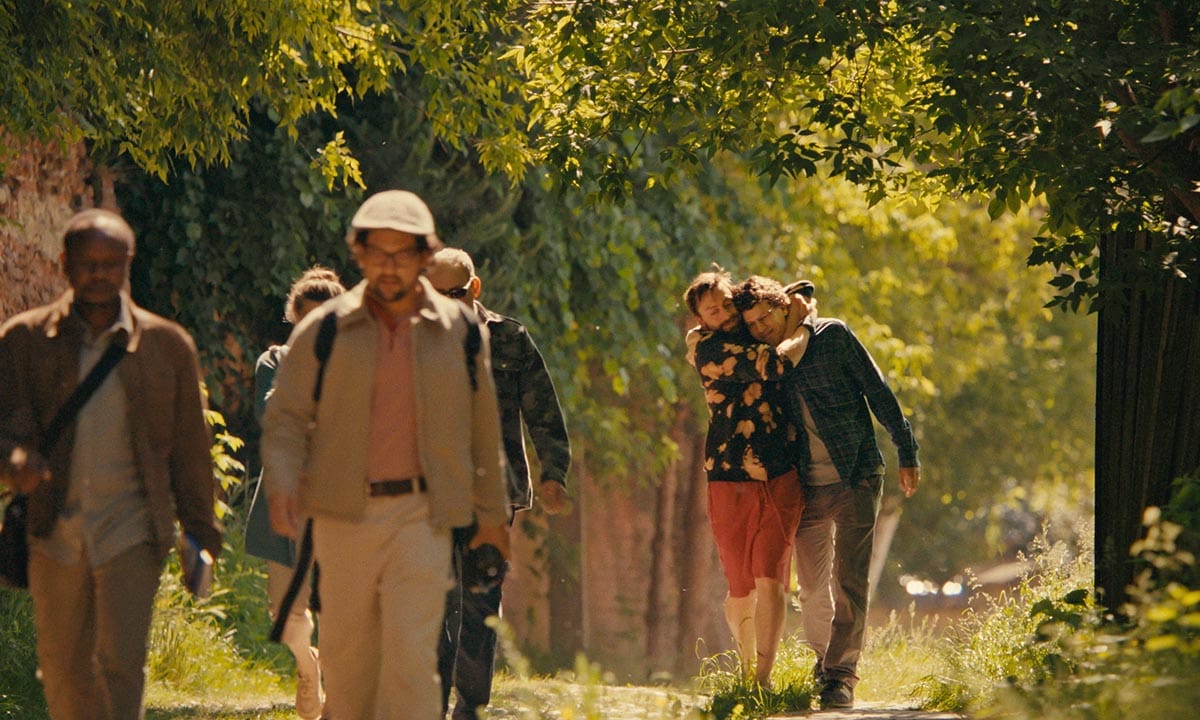
A Real Pain (Jesse Eisenberg)
A Real Pain, Jesse Eisenberg’s follow-up to When You Get Done Saving the World, is a cavalcade of angst and agony, from the familial to the historical, with an occasionally quite bleak assessment of the human condition. But it’s also levitated by a joyful sense of humor that puts up a good fight against the story’s darker moments without trying to joke them into irrelevance. A Real Pain isn’t a film that embraces easy answers or platitudes. Even after David (Eisenberg), a digital ad salesman, reveals so much of his and his cousin Benjy’s (Kieran Culkin) past in a monologue to the other members of their tour group in Poland, it doesn’t seem clear how they’ll move forward. You sense that, after their trip, the two may have a better understanding of the pain they carry but that they still won’t know how to escape it. Chris Barsanti
The Room Next Door (Pedro Almodóvar)
Strange events precipitate the bonds of sisterhood in Pedro Almodóvar’s The Room Next Door. While staring down death, Martha (Tilda Swinton) makes a request of her friend Ingrid (Julianne Moore). She procures a euthanasia pill and intends to slip peacefully into death. The intention isn’t to implicate Ingrid in her euthanasia by having her administer the pill or witness the passage. Martha simply wishes for the comfort of knowing that she has a loving presence in an adjacent room. As the women attempt to communicate across a divide, Almodóvar’s gaze lingers on pointed silences and unexplained gestures. Given the tremendous nuances that Moore and Swinton can pack into a single facial contortion, the camera has no problem picking up those grace notes. Together, the actresses’ harmonizing illuminates the film’s subversive observation that only death can help mend a frayed friendship. Shaffer
Rumours (Guy Maddin, Evan Johnson, and Galen Johnson)
Eschewing the primitive style for which Guy Maddin developed a following, Rumours stages its genre-inflected political satire in a surprisingly straightforward fashion. Co-directed with frequent collaborators Evan Johnson and Galen Johnson, the film is set at a G7 summit hosted by a fictional German chancellor, Hilda Orlmann (Cate Blanchett), at a woodsy estate, where the participants are set to draft a provisional statement regarding an unnamed world crisis. The film’s skewering of the uselessness of politicians in our turbulent modern world goes into full comic overdrive once an explicitly apocalyptic event occurs. The apocalyptic endpoint may be a farcical fantasy on the surface, but the way the world’s leaders are prone to getting lost in the wilderness while the rest of us are annihilated by transparently immediate concerns is something that the film traces with chillingly droll precision. Hanson
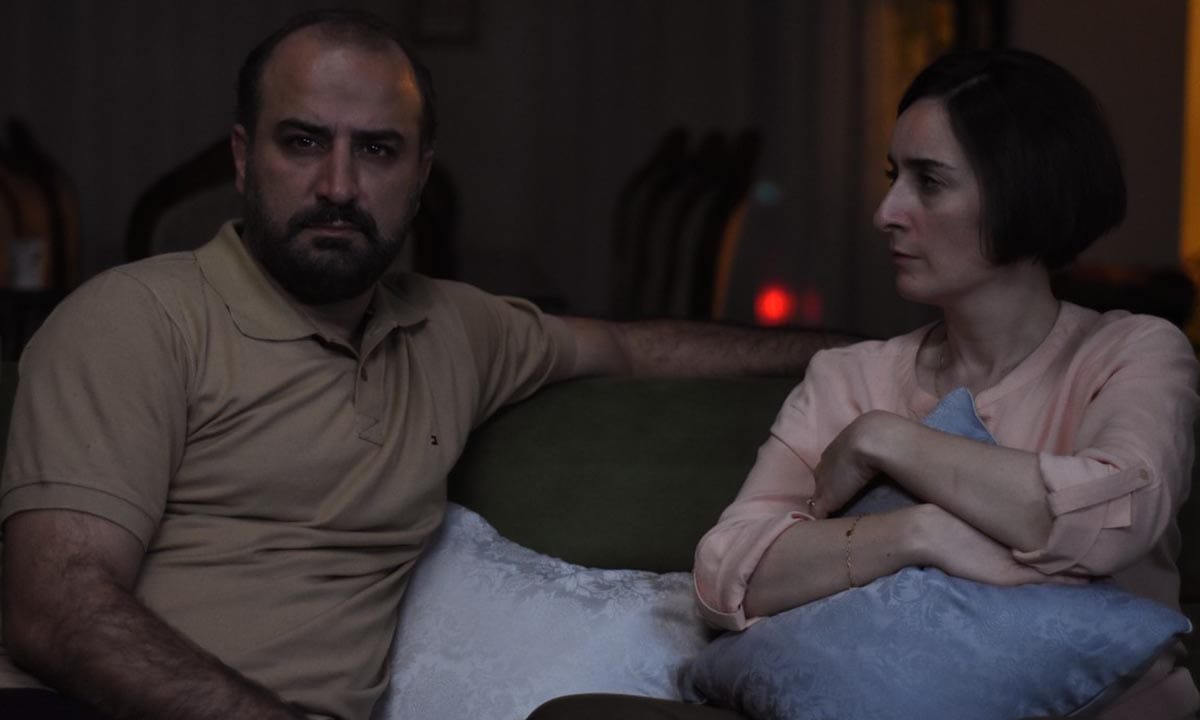
The Seed of the Sacred Fig (Mohamed Rasolouf)
The Seed of the Sacred Fig is another one of Mohammed Rasolouf’s clear-eyed accounts of the sacrifices and moral compromises forced on ordinary people by Iran’s oppressive regime. The state’s affinity for capital punishment is again a target of Rasolouf’s ire, but he also has in his sights bourgeois complacency, the tyranny of traditional values, and, above all, the cruel machinations of Iran’s patriarchal culture. Bringing implicit violence and a family’s simmering psychological warfare to the surface, the gradual mental deterioration of its put-upon patriarch sees the film’s final hour not only enter conventional action-thriller terrain but careen right through it, and it ends up somewhere not too far away from Overlook Hotel, in spirit at least. As much as this epic’s sermonizing approach might want for more subtlety, sometimes recalling a PSA, it’s refreshingly balanced and open in its inclusion of differing perspectives. Robb
The Shrouds (David Cronenberg)
One could see in The Shrouds a cautionary tale of the limits of technology in dealing with complex human emotions, especially when such technology can be so easily manipulated by outside forces. Even more disquieting is David Cronenberg’s refusal to pass easy judgment on Karsh Relikh (Vincent Cassel), who, in response to the death of his wife, Becca (Diane Kruger), creates a technology that allows people to monitor their loved ones’ corpses with the help of special shrouds—outfits with many tiny X-ray cameras embedded inside—that they don when they’re underground. The Shrouds may see a great filmmaker in a more settled frame of mind, but that doesn’t mean that his inner provocateur is dormant, as he’s still clearly willing to dive headfirst into the depths of twisted human desire. Fujishima
Stranger Eyes (Yeo Siew Hua)
Between Stranger Eyes and A Land Imagined, Yeo Siew Hua has a tendency to stage elaborate setups around comparatively straightforward concepts. This film in particular feels as though it wants to go much further—on governmental overreach, punitive justice, fractured identities, sex by way of screens—but it can’t seem to conceive of many uses for these ideas beyond suggestion. The notes it ultimately hits, even with an unexpected and emotional final sting, are frustratingly predictable. Still, the road there is windy and dense with intrigue, especially in moments contextualized as character studies of Lee Kang-sheng’s Wu. It’s a testament to the tremendous subtlety of Lee’s acting that it only becomes obvious in retrospect how much of Stranger Eyes is about him, and how much its world bends and refracts around his presence. Kronman
Suburban Fury (Robinson Devor)
Robinson Devor utilizes deep archival resources to reach back to well before Sara Jane Moore’s attempted assassination of President Gerald Ford in San Francisco in 1975. Moore’s story remains relevant today less for any parallels to recent assassination attempts than for the way that it shines a light on a burgeoning clandestine domestic intelligence apparatus. It’s clear that, to some extent, Moore’s dissatisfaction with her cozy upper-middle-class life informed her sympathy for leftist causes; she notes that her third marriage was “mostly a physical thing,” while her fourth was to a man who disapproved of her holding a job. Suburban Fury never quite pulls on these threads hard enough, but then again, Devor is less interested in reconciling Moore’s contradictory allegiances than in exposing how they were formed. Hanford
Transamazonia (Pia Marais)
Pia Marais’s fourth feature centers around American faith healer Lawrence (Jeremy Xido), who preaches the Gospel to an impoverished Brazilian village in the heart of the Amazon, aided by his daughter, Rebecca (Helena Zengel), the sole survivor of a plane crash that killed her mother. Their role in the community is troubled when a conflict arises between a local Indigenous tribe and a violent gang in the employ of the logging industry laying waste to their homeland. Plunging headlong into the murk of exploitative missionary work and environmentally destructive capitalism, Transamazonia is a film with undeniable import and sociopolitical urgency, which its muddled narrative can’t completely dampen. Robb
A Traveler’s Needs (Hong Sang-soo)
In A Traveler’s Needs, though, Hong’s sleight of hand with narrative is less consistent than usual. For a long stretch of the film’s running time, Hong appears to have built the wrong concept around the wrong actor, giving Isabelle Huppert a conceptual role that leans hard on her brand of curt whimsicality. Kim Min-hee, a veteran of similar roles in Hong’s films, as well as his partner and a key collaborator behind the scenes, might’ve made a meal of this part, suffusing it with a customary sense of gravity and turmoil. But Huppert stays outside of the character, leaving a hole at the center of A Traveler’s Needs that’s atypical for Hong’s films. The variableness of this movie is the risk of a working method as rapid and intuitive as Hong’s, but even in this unusually uneven film fruit is eventually born. Bowen
Union (Stephen Maing and Brett Story)
Stephen Maing and Brett Story’s Union chronicles the historic unionization effort at Amazon’s JFK8 warehouse in Staten Island throughout 2021 all the way up to its successful vote in 2022. True to its observational approach, the film wastes little time setting up the personal, social, and historical contexts behind the campaign, assuming a certain level of foreknowledge. Instead, Maing and Story begin in spring 2021, with Amazon Labor Union (ALU) organizer Chris Smalls—a former worker at JFK8 fired in 2020 after protesting the company’s disregard for Covid-19 safety protocols—seen hunkering down with his cohorts in a tent pitched across the street from the warehouse, the campaign already underway. The level of detail with which the filmmakers depict the unionization process is nothing short of eye-opening. Fujishima
A Universal Language (Matthew Rankin)
Matthew Rankin’s Universal Language, which is set in a parallel-universe Canada that recalls 1980s Iran as envisioned by one of the auteurs of the Iranian New Wave, takes an irreverent approach to depicting his country’s geography and socio-political environment. Though juxtaposing Canada’s drabness and relative lack of heritage with Iran’s millennia of unbroken tradition brings out the former aspects particularly clearly, Universal Language is aiming beyond mere satire or culture-clash playfulness. Throughout the film, Rankin succeeds in finding an effective tonal balance between deadpan irony and heartfelt sincerity, allowing for something like a sign for a Tim Hortons restaurant written in Farsi to be not only a solid sight gag and a gentle provocation, but also an illustration of how people are shaped by the social practices, visual symbols, and built environment that surround them. Robb
Who by Fire (Philippe Lesage)
More than anything, Philippe Lesage’s Who by Fire is a film of great freedom, using its 161-minute runtime to act as a container for a profusion of scenarios, continually deepening the tensions between characters that slowly develop while maintaining an outwardly convivial, even exuberant atmosphere. The sense of play extends to characters literally bursting into song, including a rollicking (and hilariously plot-relevant) group dance to the B-52s’s “Rock Lobster,” but is typically expressed by Lesage’s facility with camera movement. A few scenes set around the central dining table are incredibly expressive, as in one long take where the camera drifts over the table into seemingly impossible positions. The effect of this and many other sequences is the suggestion that anything can happen at any given moment, even violence. Ryan Swen
Viet and Nam (Truong Minh Quy)
Deliberately paced and prone to indulge in poetic intermezzos, at once earthy and otherworldly, Truong Minh Quy’s Viet and Nam has earned comparisons to the work of Apichatpong Weerasethakul, among others. But if the film is conversant with many of the prevailing trends in international art cinema, Quy doesn’t shy away from staring down the incensing specificities of current events. Quy has said in interviews that his film was at least partially a response to the deaths of 39 Vietnamese refugees, discovered in a refrigerated trailer outside of London in 2019. And interestingly enough, the further Viet and Nam progresses into its increasingly symbolic and fragmented second half—forget Weerasethakul, Quy at times seems to be channeling Muriel-era Alain Resnais—the more direct and polemical it also becomes. Eric Henderson
Youth (Hard Times) (Wang Bing)
Youth (Spring), the first in Wang Bing’s trilogy of documentaries about garment workers in Zhejiang province in eastern China, eschewed incident to stress the numbing quality of the manual labor and economic stagnation of its young migrant workers. The second installment in the trilogy, Youth (Hard Times), similarly leans into durational extremes but eventually and sneakily reveals a broadened scope. There’s a fascinating tension here between the length of individual scenes and their documentation of the arduous process of worker organization, as well as the external and internal struggle with ingrained power dynamics between the average joe and the powers that be. Rarely has one of Wang’s films so nakedly called out the collusion between state and commerce to ensure the powerlessness of average citizens. Cole
Youth (Homecoming) (Wang Bing)
The Chinese character rendered in Youth (Homecoming) as “homecoming” is “guī,” which translates more accurately to “return,” a sentiment that is deliberately ambiguous. Throughout his trilogy, Wang’s modus operandi has been expansion through repetition, a recursive exploration of similar spaces that nevertheless exhibits differing emotions, concerns, and personalities. In doing so, and in spending so much time with his remarkable, downtrodden subjects, he does a great deal to reconfigure what the concept of home means; utilizing previous structural strategies before breaking away once again perfectly embodies the dynamic of continual reconsideration endemic to their experiences. As indicated by the combination of a final sequence in which another worker returns home in 2019 and the last shot of this nine-hour endeavor, to return is a never-ending process, full of sadness yet tinged with hope. Swen
Since 2001, we've brought you uncompromising, candid takes on the world of film, music, television, video games, theater, and more. Independently owned and operated publications like Slant have been hit hard in recent years, but we’re committed to keeping our content free and accessible—meaning no paywalls or fees.
If you like what we do, please consider subscribing to our Patreon or making a donation.



